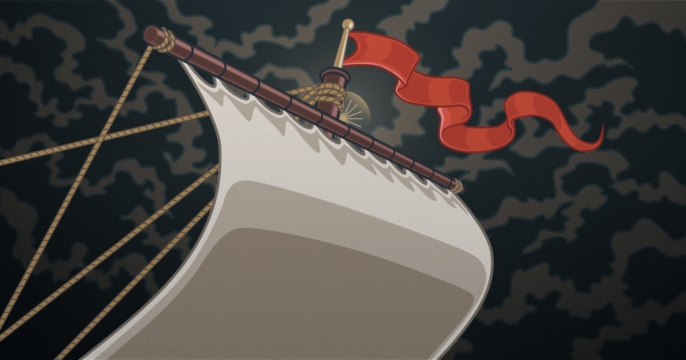
The Spark: When others batten down hatches, hoist up the sails
For G4 Kegs, the spark was becoming a new kind of industry leader — one that prioritized meaningful partnerships in a time when the brewing industry was aflame.
I’ve spent countless hours telling any business leader who would listen that the only meaningful differentiation that a company has comes from within.
Bear with me for a moment and I’ll explain.
Company leaders spend time, energy, and money – lots of money – in search of the right product, service, marketing, technology, and other intellectual property to bring their company the competitive advantage.
This is smart.
However, in spite of this savvy approach, many businesses with remarkable products or services fall short in the marketplace. They struggle to become profitable or fail to capture more than a tiny share of the market.
In contrast, there are certain companies that enter an established marketplace and offer products or services that are identical to the established competition. Despite seemingly insurmountable odds, they flourish.
It’s an enigma. What makes certain companies succeed and others fail? Why aren’t innovative ideas enough to drive business success? What does drive success?
Unfortunately, due to the ubiquitous availability and flow of information, any clear advantage or period of differentiation that comes from a new product, service, technology, or other offering is shorter than it’s ever been before. Whenever a company develops a useful product or service, it isn't long before other businesses capitalize on that opportunity by producing a similar (and often better) offering.
This trend will continue. And, with the increasing amount of data available, it’s likely to accelerate. You should proceed with the knowledge that any successful offering can and will be replicated by your competitors in the blink of an eye.
There is, however, one competitive advantage that is available to any company that wants it, but is largely ignored.
It’s what I call a Deep Moat philosophy.
Now to be perfectly clear, this isn’t a novel idea. I’m actually building upon the idea of a great thought leader.
Warren Buffet – one of the world’s richest people renowned for his investing philosophies – has been shaping global stock-investment viewpoints for decades. He coined the term to describe the companies he looked to invest in.
“In business, I look for economic castles protected by unbreachable moats.” – Warren Buffet
Buffet values a business, or castle, by the competitive advantage that protects it. He knows that only those castles with a deep, wide moat will stand the test of time.
Now, that is certainly interesting from an investment strategy, but as the leader of a company how can you apply this to your own business?

A deep business moat is all about the unique way in which your company provides products or services. It’s the intangible elements of your approach that differentiate your brand – things like your culture, processes, customer service, meeting rhythms, leadership structure, values, mission, vision, A players, and strategy. When you weave all of these together, you create a moat around your castle that’s unbreachable.
You have the competitive advantage.
Your moat makes it harder for the barbarians (i.e. your competition) to get into your castle to steal your customers. It also creates a unique differentiation that makes it harder for your customers to walk away.
Google is a well-studied example. The company has created a unique culture with team members who have the dedicated responsibilities of keeping employees happy and keeping them productive. To keep their moat deep, Google is extremely selective with their hiring process – they know exactly the type of person who will fit their culture. But once hired, Google employees get perks such as free meals, swimming pools, nap pods, video games, and more. This culture has paid off for Google, as they consistently rank among the best places to work and enjoy high retention in an industry and hometown (Silicon Valley) that’s notorious for having talent poached by the competition.
Just last month, Google accounted for 66.5% of search engine traffic across the worldwide web, with competitors Bing and Yahoo! – both providing nearly identical services – trailing far behind with 11.02% and 8.44% respective market shares. It’s the intangibles that differentiate Google, the internal culture that attracts game-changing people and internet users everywhere.
"When new employees join the company, they are required to sign a document stating that they have read the core values document and understand that living up to the core values is part of their job expectation." - Tony Hsieh
Next, consider the online shoe retailer, Zappos. It started as a shoe store that sold its goods online (today, shoes continue to represent 80% of its products). In the past 10 years, the company has grown from almost no sales to more than $1 billion on annual gross merchandise sales, driven primarily by repeat customers and word of mouth. CEO Tony Hsieh attributes that profitability to a formalized definition of their culture through core values.
So, what can your company do to fortify your moat? What structural elements will help you avoid the “shallow moat paradigm” – to allow you to build deep and wide, and bolster your competitive advantage?
Successful businesses build their deep moat from the inside out. It starts from the inside with some key fundamental drivers:
Your company’s “mission” provides the focus and motivation you need to take your business to the next level, and is the driving force behind everything your team does within your company, and externally with prospects, customers, vendors, and associates.
A meaningful mission statement isn’t a long, boring explanation of your work. It’s a compact, vibrant description of what drives your business. At Kinesis, we’ve whittled our mission down to “transformation,” and it’s the anchor for everything we do.
If you think of your business as a living, breathing entity, “vision” is what it dreams about. And this dream is bigger than quantitative goals like growth and profitability. We’re talking about the dream that makes your business tick… the big picture that gets your team excited and that drives your company forward. At Kinesis, our “big dream” is to change the marketing paradigm for small businesses.
Your company’s core “values” are the guiding tenets that align your day-to-day work with your vision and mission. They inform each and every decision your team makes, day in and day out. At Kinesis, our core values are “Think Big,” “Build to Last,” “Share the Good,” and “Do the Right Thing.” Crafting actionable values that speak to your ideal clients and A-player prospects make them universally tangible and applicable.
Once you’ve established where you’re headed, you’ll need a plan for making it there. When integrated throughout your business model, strategic thinking can solidify your competitive advantage. Studies show that companies with written strategic plans grew 50% faster than those that did not.
These are big ideas, and it's easy to feel overwhelmed. The truth is, delving into the depths of your business and reshaping your approach are truly herculean efforts. But when you take the strides to shape your business from the inside out, you establish a foundation for a deep moat and, ultimately, business success.
Want to learn more about how Kinesis creates deep moats for our clients? Visit our website or give us a call at 503-922-2289 to set up a consultation.
Get insights like this straight to your inbox.